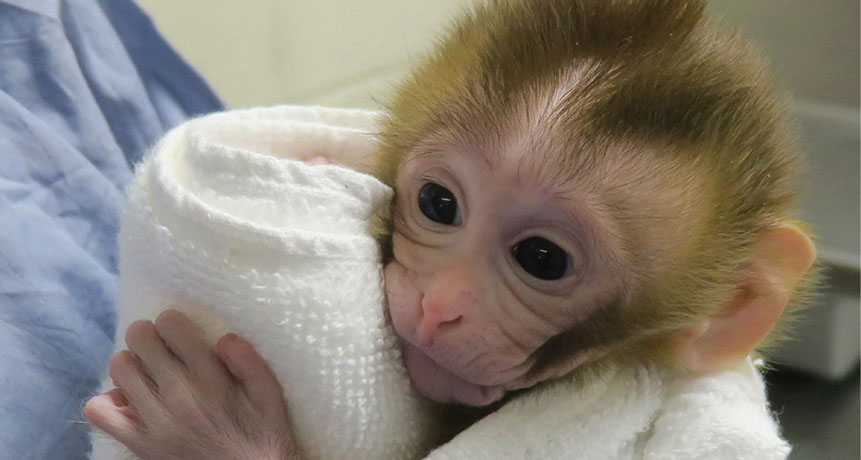Saving monkey testicle tissue before puberty hints at a new way to preserve fertility
The results give hope to one day helping young male cancer patients

BIRTHDAY GIRL Baby rhesus macaque Grady, shown here at her two-week checkup, was conceived via in vitro fertilization using sperm from a frozen, immature testicle tissue sample later grafted back onto the donor monkey. Grady, who has been developing normally, will celebrate her one-year birthday on April 16.
A.P. Fayomi et al/Science 2019







